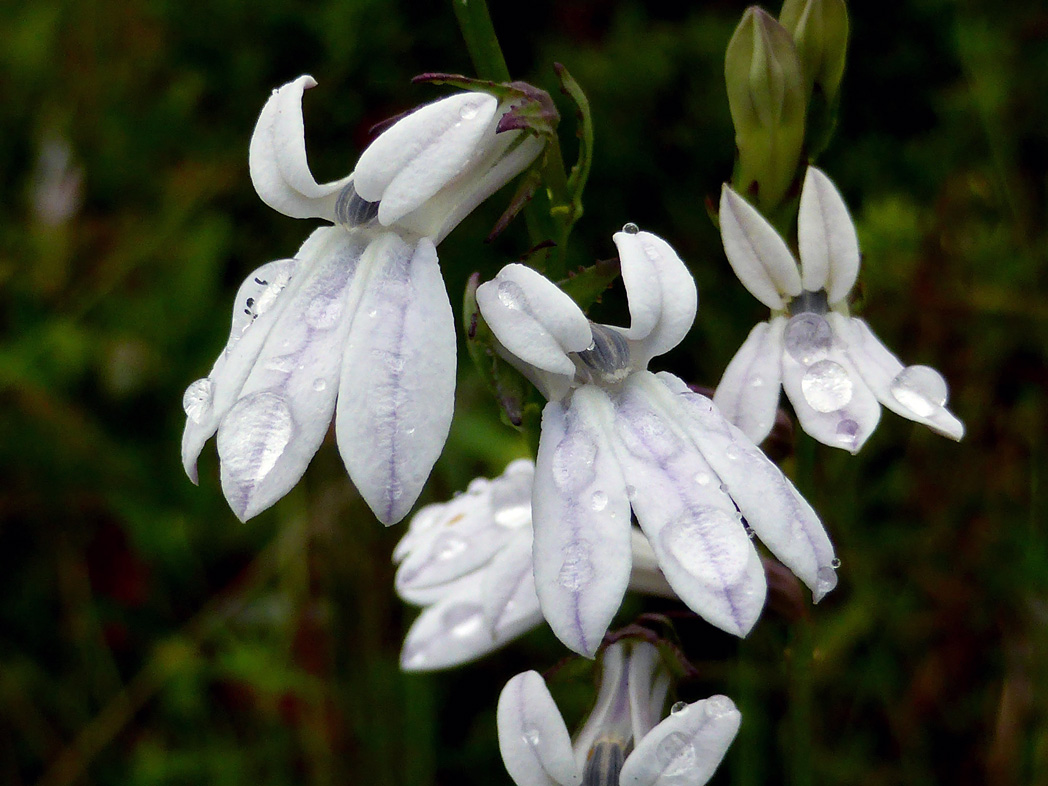White lobelia
Pictured above: White lobelia (Lobelia paludosa) by Eleanor Dietrich. Click on terms for botanical definitions. View post as a PDF.
White lobelia is a winsome, wet-loving wildflower found in swamps and wet flatwoods throughout much of Florida. It primarily blooms in spring and summer, but may bloom year-round, especially in South Florida. The flowers attract bees and butterflies.
Flowers are white with a tinge of pale purple or blue. They are two-lipped — the upper lip has two fused petals and is reflexed; the lower lip has three fused petals. The entire corolla is fused at the base, forming a tube. Flowers are borne in terminal racemes. Sepals are narrow with toothed, reddish-purple margins. Basal leaves are long (between 2 and 6 inches), narrowly lanceolate to elliptic, and sessile. Leaf margins may be entire or toothed. Leaf arrangement is alternate. Stem leaves are reduced or absent. Seeds are borne in inconspicuous capsules.
The genus Lobelia is named for Matthias de Lobel (1538-1616), a Flemish physician, botanist and author of a landmark botany textbook. The species epithet paludosa is from the Latin paludosus, meaning boggy, swampy or marshy.
Family: Campanulaceae (Bellflower family)
Native range: Nearly throughout
To see where natural populations of White lobelia have been vouchered, visit florida.plantatlas.usf.edu.
Hardiness: Zones 8A–10B
Lifespan: Perennial
Soil: Moist to wet, well- to poorly drained, sandy or calcareous soils
Exposure: Full sun
Growth habit: 1–3’ tall
Propagation: Seed
Garden tips: White lobelia is best suited for moist to wet wildflower gardens, naturalistic landscapes and habitat restorations. It will die back in the winter and may require annual pruning of old flowering stems. It does not tolerate salt or drought.
White lobelia is generally not commercially available. Visit its natural habitat to see it.
For more information on other Lobelia species, see these resources:

